Earth and Planetary Materials - Scientific instruments
- Home
- Team directory
- Publications
- Communications
- PhD thesis
- Collaboration network
- Former members
Facilities
- General database
- Electron Microscopy Platform - Institut Chevreul
- High Pressure Lab - Institut Chevreul
Activities
Ongoing projects
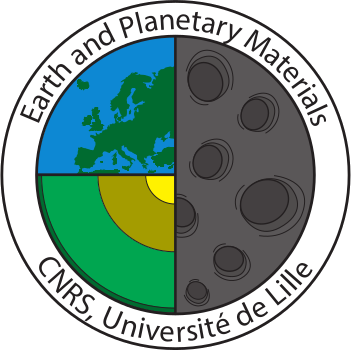
Earth and Planetary Materials - Scientific instruments
Scientific instruments from the UMET instrument database managed by the research group.
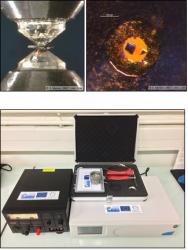
Diamond anvil cells
Research team: Earth and Planetary Materials.
Contacts: Sébastien MERKEL, Julien CHANTEL.
The diamond anvil cell allows the experimental study of mantle materials and the Earth's core. The sample is compressed between two diamonds having a flat surface with a diameter ranging from 10 to 700 μm. The properties of the sample are then studied by diffraction or spectroscopy. The laboratory has several cells, allowing in-situ experimentation at pressures above the megabar. For temperatures below 1500 K, the sample can be heated using a graphite furnace fitted inside the diamond cell. Samples can also be heated to temperatures of several thousand degrees by focusing on the sample of power lasers (10 to 100W, infra-red). This operation allows the activation of phase transitions with slow kinetics, to relax the constraints within the samples, and to reproduce the conditions of the interior of the planets. The laboratory does not have a laser heating system and we occasionally use assemblies installed in other laboratories or during our in-situ campaigns on large instruments.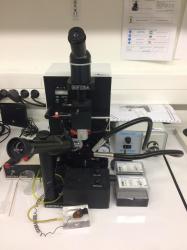
Electro-erosion drill
Research team: Earth and Planetary Materials.
Contacts: Sébastien MERKEL, Julien CHANTEL.
Fast, accurate and centered drilling of metal joints used for diamond cell experiments.
Fluorescence and Raman spectroscopy
Research team: Earth and Planetary Materials.
Contacts: Sébastien MERKEL, Julien CHANTEL.
The fluorescence spectrum of the ruby is particularly useful for measuring the pressure applied in a diamond cell. Indeed, the rubies doped with Cr3 + ions emit a spectrum whose lines are shifted with the pressure. Raman spectroscopy probes vibrations in crystals, liquids and glasses. The changes in the spectra induced by the pressure can be interpreted in terms of changes in the arrangement of atoms and the motions of these atoms.
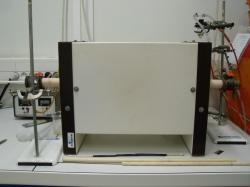
Horizontal tube furnaces under controlled atmosphere (Pyrox VG30 )
Research team: Earth and Planetary Materials.
Contacts: Jannick INGRIN, Adeline MARIN.
Conduct atomic diffusion experiments in minerals and rocks.Oven for annealing (500 - 1300 ° C) under controlled oxygen fugacity conditions for small samples (a few mm)
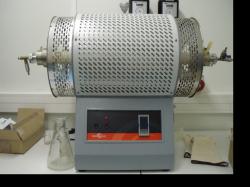
Horizontal tube furnaces under controlled atmosphere (Thermoconcept ROC 50/250/15 )
Research team: Earth and Planetary Materials.
Contacts: Jannick INGRIN, Adeline MARIN.
Conduct atomic diffusion experiments in minerals and rocks.Furnace for annealing (500 - 1300 ° C) under controlled oxygen fugacity conditions for samples of some cm.
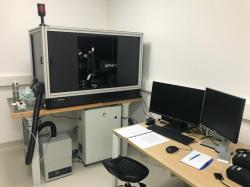
Laser cutting machine
Research team: Earth and Planetary Materials.
Contacts: Julien CHANTEL, Sébastien MERKEL.
Description en Anglais: The system allows for fine preparation of gaskets and samples for diamond anvil cell experiments. Indeed, these experiments require metal drilling for openings with a diameter that can go down to 50 μm. The samples, themselves, of metallic or ceramic nature, have a diameter of between 10 and 30 μm.
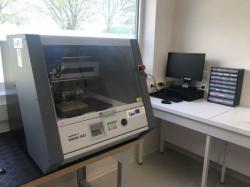
Micro digital milling machine
Research team: Earth and Planetary Materials.
Contacts: Julien CHANTEL, Nadège HILAIRET.
This tool allows the production of prototypes or small series of metal or ceramic parts for so-called 'big volume' experiments (piston-cylinder and multi-anvils).
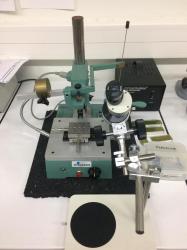
Micro-drill
Research team: Earth and Planetary Materials.
Contacts: Sébastien MERKEL, Julien CHANTEL.
Column precision drill, used for part making for so-called 'big volume' experiments (piston-cylinder and multi-anvils).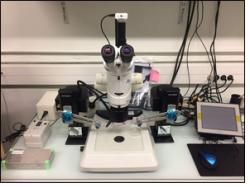
Micromanipulator
Research team: Earth and Planetary Materials.
Contacts: Sébastien MERKEL, Julien CHANTEL.
Allows handling of items smaller than 10µm when preparing diamond cell experiments.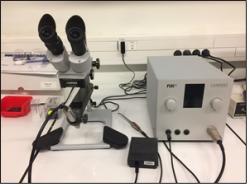
Microwave welder under neutral atmosphere
Research team: Earth and Planetary Materials.
Contacts: Julien CHANTEL, Nadège HILAIRET.
Fine welding technique by instant fastening for all metals. Used to hermetically seal the metal capsules of so-called 'big volume' experiments (piston-cylinder and multi-anvils).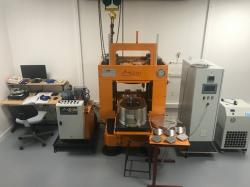
Multianvil Press
Research team: Earth and Planetary Materials.
Contacts: Julien CHANTEL, Nadège HILAIRET.
Ø This device can generate simultaneously pressures up to 26 GPa and temperatures up to 2000°C on millimetric samples.
The applications of multianvil presses are numerous: synthesis of new materials, studies of phase equilibria, melting curves, crystal transformations, measurement of elastic or electrical properties, etc.
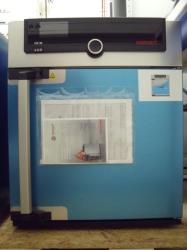
oven (300°C) UN30 Memmert
Research team: Earth and Planetary Materials.
Contact: Corentin LE GUILLOU.
Dedicated in particular to long-term hydrothermal weathering experiments.32 liters, programmable, temperature range 30 to 300 ° C
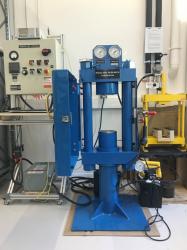
Piston-cylinder press
Research team: Earth and Planetary Materials.
Contacts: Nadège HILAIRET, Julien CHANTEL.
This press, with a solid confinement medium, allows experiments at pressures up to 4 GPa and temperatures of 1800 ° C, on samples pluri-millimeter to centimetric. This device contributes to the synthesis of innovative materials, the production of materials with controlled compositions and microstructures, the synthesis of synthetic rocks and the sintering of natural or synthetic rocks.
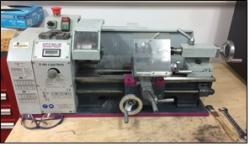
Precision tower
Research team: Earth and Planetary Materials.
Contacts: Nadège HILAIRET, Julien CHANTEL.
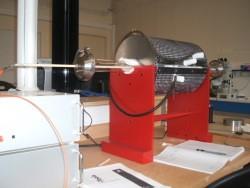
tubular furnace 900 ° C under gas flow
Research team: Earth and Planetary Materials.
Contact: Hugues LEROUX.
annealing furnace under gaseous flow (neutral gas as N2 type, Ar ..) max temperature 900 ° C.
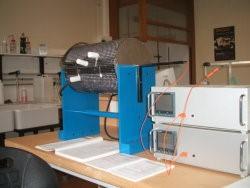
tubular furnace 900°C
Research team: Earth and Planetary Materials.
Contact: Hugues LEROUX.
tubular furnace, under air, max temperature 900 ° C. furnace adapted to long-duration annealing.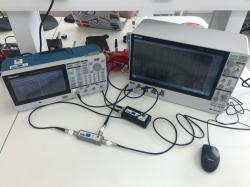
Ultrasonic wave velocity mesurement setup
Research team: Earth and Planetary Materials.
Contacts: Julien CHANTEL, Sébastien MERKEL.
This setup allows the measurement of elastic properties through ultrasonic wave velocity measurements.
The device is adaptable to the multianvil press, to the piston-cylinder press and to the Paris-Edinburgh type torsion module.
It will therefore allow measurements over the pressure range of 1–25 GPa. The setup consists of an arbitrary function generator (AFG31102), a pre-amplifier, a directional bridge (50 Ohm RF bridge 300kHz to 6GHz) and a digital oscilloscope (MSO54).
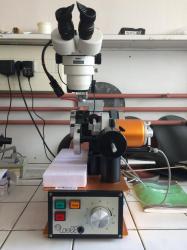
Wire saw
Research team: Earth and Planetary Materials.
Contacts: Nadège HILAIRET, Julien CHANTEL.
Precision cutting (lower than 100 µm) of metals, ceramics and samples without destruction or modification of the material.

